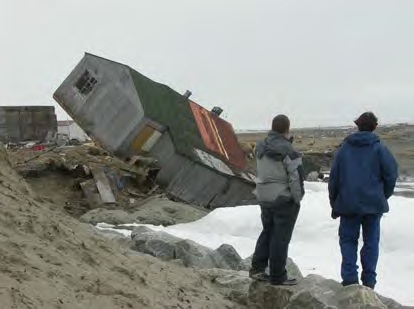
New Report Outlines Climate Threat to Coastal Communities
On January 28th, the U.S. Global Change Research Program released a report titled “Coastal Impacts, Adaptation, and Vulnerabilities: A Technical Input to the 2013 National Climate Assessment.” This new report highlighted the impact climate change has on coastal communities along the United States. This report has come at an important time, especially in the wake of Superstorm Sandy which devastated communities along the coast of New Jersey and New York.
With all the recent changes in weather patterns, it is important that the U.S. Global Change Research Program has taken the time to conduct this study. Seventy nine scientists and authors contributed to this report and were able to find new and important information that gives insight into climate change and its effect on coastal communities.
One key finding of the report released on January 28th, is that climate change will not only affect the ecosystems of coastal communities, but also affect their economic and social structures. Fifty percent of the nation’s population is concentrated along the coastal lines including Atlantic and Pacific coasts, Gulf of Mexico, the Great Lakes, and the Alaskan coast. Coastal communities also contributed $8.3 trillion to the U.S economy back in 2010.
With rising temperatures also come changes in the water currents, rising sea levels, and increased wave heights. Furthermore, the more storms intensify, there will be an increase of coastal erosion, flooding, and saltwater intrusion.
The problem of rising sea levels will have a negative impact on other waterways. Due to the rising sea levels, salt water is being pushed into marshes and estuaries, and theses waterways are being polluted. The climate change is also having a negative impact on the organisms living in these waterways including the abundance and distribution of these organisms. These coastal ecosystems are responsible for many things such as, purifying the air and water, detoxifying waste, and storing carbon to name a few. However, due to pollution and increased human development along these areas, these natural cycles are being disrupted.
Another key finding is the threat to public health from climate change for communities living on the coast. For example, the report projects a decline in quality of seafood, changes in disease patterns, and an increased rate of heat related mortalities. With an increase in flooding and natural disasters, there will be an increased risk of human vulnerability.
The threat is compounded by the fact that more people are moving to coastal areas, putting them in danger from the increasing frequency of flooding and natural disasters. Climate change and rising sea levels are also projected to have a high impact on both public and private infrastructure such as coastal employment, clean water, roadways, and transportation.
ASP has consistently highlighted the threat to national security from climate change, and this report details how that threat might may in fact be worse than previously predicted.
To read the entire study click here
To read ASP factsheet “American Security: The Impact of Climate Change” click here








[…] New Report Outlines Climate Threat to Coastal Communities […]
[…] in climate-related extreme weather events.” This could help address climate change, which the U.S. Global Change Research Group describes in their 2013 National Climate Assessment report as “difficult to prioritize” because […]